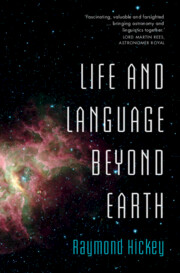Book contents
- Life and Language Beyond Earth
- Reviews
- Life and Language Beyond Earth
- Copyright page
- Contents
- Tables and Figures
- Preface
- How to Use This Book
- Part I Introduction
- Part II The Universe We Live In
- Part III Our Story on Earth
- 11 The Slow Path of Evolution
- 12 How Does the Whole Work?
- 13 The Road to Homo sapiens
- 14 The Rise of Human Societies
- Part IV The Runaway Brain
- Part V Language, Our Greatest Gift
- Part VI Life and Language, Here and Beyond
- Book part
- Glossary
- Timelines
- Figure credits
- References
- Bibliography
- Index
14 - The Rise of Human Societies
from Part III - Our Story on Earth
Published online by Cambridge University Press: 16 September 2023
- Life and Language Beyond Earth
- Reviews
- Life and Language Beyond Earth
- Copyright page
- Contents
- Tables and Figures
- Preface
- How to Use This Book
- Part I Introduction
- Part II The Universe We Live In
- Part III Our Story on Earth
- 11 The Slow Path of Evolution
- 12 How Does the Whole Work?
- 13 The Road to Homo sapiens
- 14 The Rise of Human Societies
- Part IV The Runaway Brain
- Part V Language, Our Greatest Gift
- Part VI Life and Language, Here and Beyond
- Book part
- Glossary
- Timelines
- Figure credits
- References
- Bibliography
- Index
Summary
As exobeings can only arise through evolution the roots of their sociality would lie in earlier stages of their biological development. From Earth, we know that animals bond and form communities in different ways, with the common purpose being the survival of the species. This is the basis of their very divergent kinds of behaviour. There is no reason why this should not be the case on an exoplanet as well.
Animals differ widely in the extent to which they interact with each other. Some animals, like certain types of birds, such as albatrosses, remain together as couples to rear their young and return to each other every year; others do not, with the male leaving once mating has occurred.
- Type
- Chapter
- Information
- Life and Language Beyond Earth , pp. 228 - 248Publisher: Cambridge University PressPrint publication year: 2023

